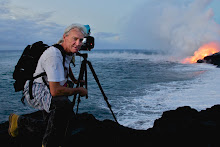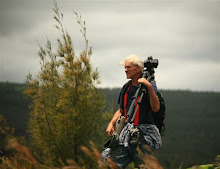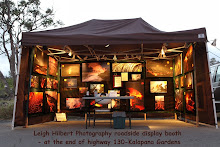 Click the image for a larger view but in a new window.
Click the image for a larger view but in a new window.Above, I have added some notes to a recent USGS aerial photo, which covers the general update for the Pulama Pali and coastal flats eruptive zones, as well as the delta ocean entry.
Below is a photo kindly contributed by a Kalapana Gardens resident showing a close-up of the current surface lava breakout that is nearest to the lava viewing area, which is now less than a mile distant(undocumented)and progressing generally to the east towards Kalapana Gardens. There are other breakouts further away near the base of the pali and flats.

~~~~~~~~~~~~~~~~~~~~~~~~~~~~~~~~~~~~~~~~~~~~~~~~~~~~~~~~~~~~~
Kilauea eruption viewing update: (Little change this week)
Both day and night views of our two drive-in volcanoes continue to put on a continuous display of eruptive activity that draws thousands of visitors from around the world every week.
The Halema’uma’u crater has been degassing sulfur dioxide fumes by day and glowing strongly at times after dark from lava deep within the craters pit vent.
 Great views of this impressive crater are from the Jaggar Museum balcony within the Hawaii Volcanoes National Park, depending on the weather; and the park is open to the public 24 hours a day with a nominal entrance fee by day.
Great views of this impressive crater are from the Jaggar Museum balcony within the Hawaii Volcanoes National Park, depending on the weather; and the park is open to the public 24 hours a day with a nominal entrance fee by day. Meanwhile, down along the Big Island’s coastline, many people are still making the trek out to the end of highway 130 and on to the Kalapana access road and seeing distant red surface lava glows after dark and the continuing ocean entry lava plume. The viewing area is open from 2:00 PM to 9:30 PM daily. For update information on the viewing area, phone the county lava-hotline at 961-8093, or after 2:00 PM: 430-1966 or 217-2215. Changing wind directions can affect the costal viewing, phone before heading out there.























































